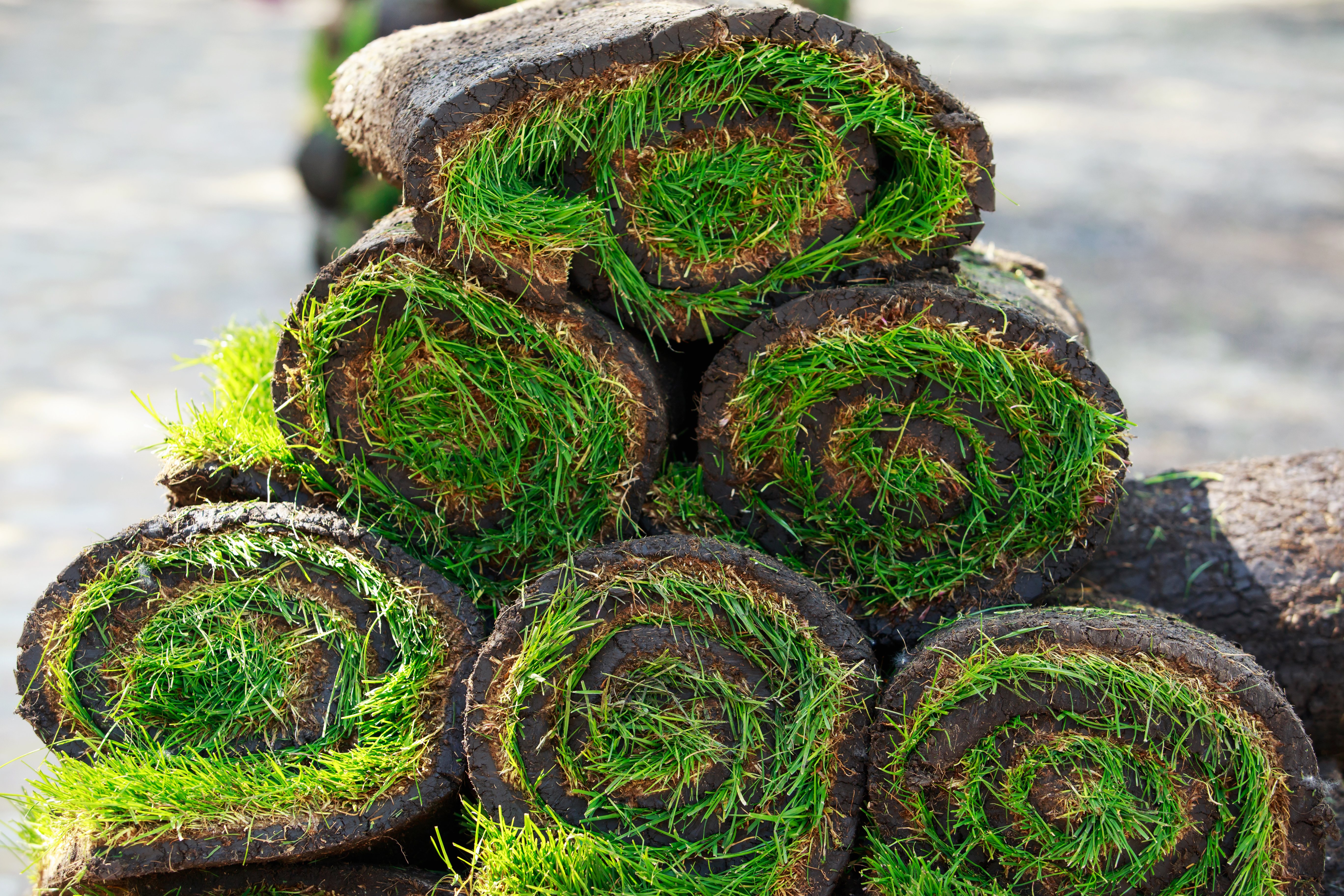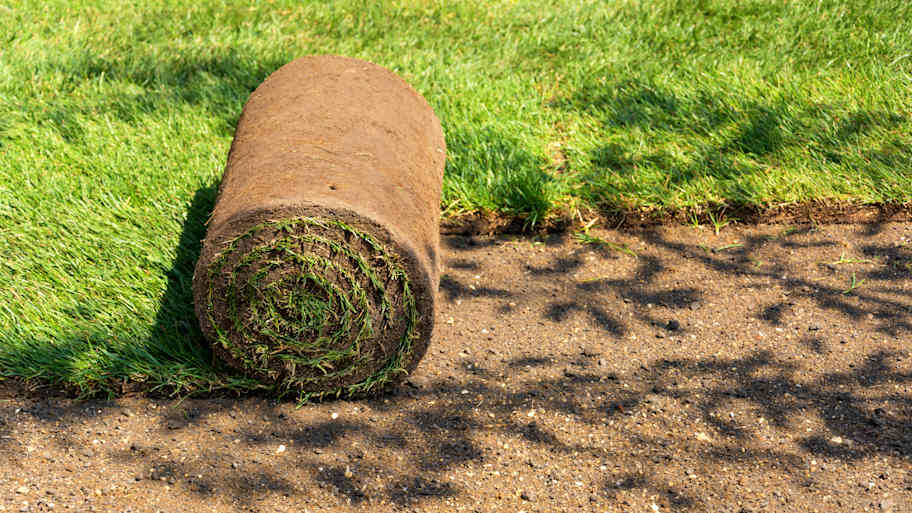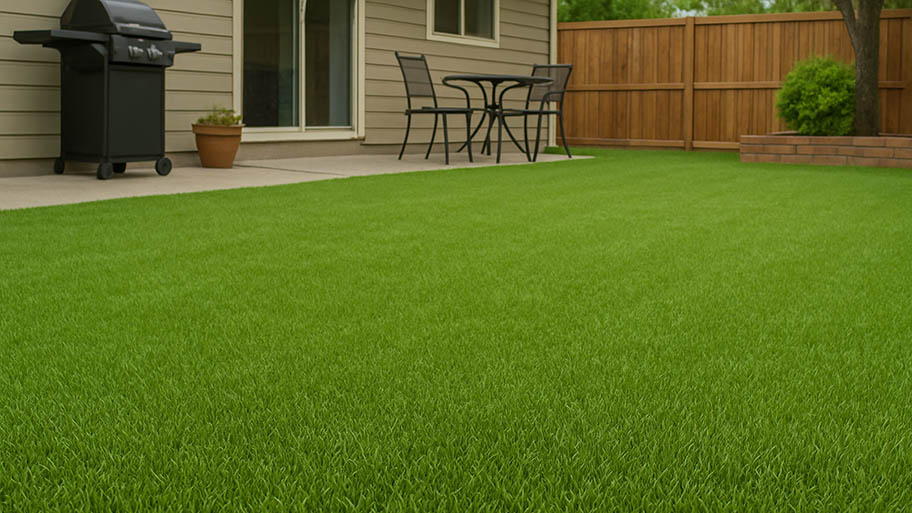
Removing an old lawn is often necessary to plant new grass or build a new outdoor structure. Find out what to budget for your lawn removal cost.
Roll out the green carpet for a garden glow-up


In the battle of sod versus seed, sod comes out on top if you’re looking for a ready-made, lush lawn and instant curb appeal. However, if you lay sod wrong, you could end up with a patchy, brown, bad investment rather than a verdant backyard oasis. These prep, position, and post-roll tips for laying sod will help set you up for success.

Buy the right type of sod for your climate and conditions from a respected dealer who follows best management practices. This means you don’t have to worry about your sod arriving already contaminated with weeds or lesser-quality grasses than those you think you’re purchasing.
Before you accept a delivery of sod, inspect it to ensure it’s dense, uniformly thick, evenly moist (not dripping wet), and free from yellowing blades of grass.
Avoid overspending or ending up with a bald corner on your lawn by accurately calculating how much sod you need. Whether ordering by pallet, piece, or roll, carefully measure your yard to get the appropriate square footage and add 5% to 10% extra to allow for cutoffs.
Sod ordered by the pallet covers an average of 500 square feet, making this the most economical and practical option for large lawn landscaping projects.
In most regions, the best time to lay sod is spring or fall. You can lay sod at any time of year, but opting for these seasons helps to keep the soil desirably moist and reduces the chance of damaging the establishing lawn with intense heat or cold.
Cool-season grass types establish best in the fall, and warm-season grasses benefit from spring laying. If you need to lay your sod during the intense summer heat, especially in drought-prone regions, you’ll have to go to extra efforts to prevent the burgeoning lawn from drying out.

Don’t have your sod delivered before you’ve done the right soil prep work. You want to install your sod immediately after it arrives—or, at the very least, within 48 hours of it being cut. When conditions are hot and windy, speedy installation is even more important.
The longer you leave sod in a roll or on a pallet, the greater the risk of this living plant material drying out, making it difficult to establish roots.
Freshly laid sod edging dries out quicker than the rest of the turf. Gently raking a fresh mound of soil up to the grass border prevents root exposure in any gaps. This reduces the risk of an unsightly and hard-to-reverse brown ring developing around the edges of your green lawn.
Kneeling on a piece of plywood while installing the sod keeps your pants from getting damp and distributes your weight more evenly over a larger area, helping to prevent turf damage.
Minimize foot traffic in the first 2 to 4 weeks following laying sod to give the roots time to bed in. Coach your kids so they know they’ll have to wait to play soccer on the lawn and find an alternative potty place for your pets. Pet urine can kill grass even when it’s established, but it’s even more problematic for new sod.
You can tell rooting is successful when you gently lift a corner of the sod and it offers some resistance.
My lawn looks beautiful, thanks to Sanchez Landscaping. Very professional, courteous, and efficient! I intend to send some business their way! Carole in Monroe
Fast, Friendly, and knowledgeable. Loved working with Stephen. Looks great.
Stan was prompt and communicates well. He did a great job on my lawn. Customer services was excellent. I would recommend!
He is amazing. Martinez is super prompt, very knowledgeable about his craft and I'm glad I change lawn care service to Martinez.
They got the post installed. Although they didn't set the post deep enough, leaving me the job of cutting the top of the post off so it is the same height as the others. They also left fence clippings all over my yard for my lawn mower tires to find. I picked up around 20 pieces of...
T.J. is very open and honest. He's willing to answer questions and explain any questions regarding lawn care. We're very pleased with T.J.'s Lawn Service.
Hired North Ga Lawn after my lawnmower took a dive. Owner was out same day to quote me and next day for service. Yard looks great. I would definitely recommend North Ga Lawn.
Efficient service and in the 8 years Iâ ve used them they are always on time with their scheduled maintenance of my lawn.
Jake is very professional and personable. I will gladly continue using his lawn service.
From average costs to expert advice, get all the answers you need to get your job done.

Removing an old lawn is often necessary to plant new grass or build a new outdoor structure. Find out what to budget for your lawn removal cost.

How much it costs to rent a lawn aerator depends on what kind you rent and how long you rent it for. Read on for the full details.

Artificial grass is a low-maintenance alternative to traditional turf. Learn how much artificial grass installation costs and what affects your price.

Dreaming of a lush lawn but don’t want to wait for seed to grow? Use these sod questions to prep yourself for an easy and stress-free installation.

While both grass types grow fast, crabgrass and Bermuda grass couldn’t be more different. Learn how to tell the difference between crabgrass vs. Bermuda grass.

Learn how to prepare soil for grass seed to give your new lawn the best chance of becoming healthy, happy, robust, and the envy of your neighbors.